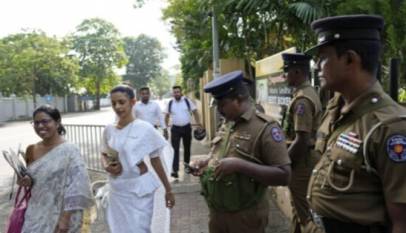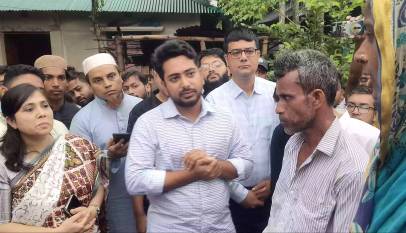Govt’s operating expenses increased by 105 pc in 7-yr
Farhad Chowdhury: Every year a large portion of the budget is earmarked for the social infrastructure sector. To improve the quality of life of the public, the government spends money on education, health, housing, social security and welfare, local government departments and development and cooperatives under this sector, which is considered as part of the operating expenditure of the government.
According to the data of the Ministry of Finance, the share of social infrastructure sector in the total operating expenditure of the government was also the highest in the fiscal year 2016-17. At that time, 32.1 percent of the total operating budget was allocated to this sector. And in the fiscal year 2022-23 it comes down to 25.9 percent. At the same time, the share of social infrastructure in total operating expenditure has decreased from 38.2 percent to 27.2 percent.
However, the government’s operating expenses have doubled during this period. According to the data of the Ministry of Finance, the size of operating expenses has increased by 105 percent in the seven financial years from 2016-17 to 2022-23. In the fiscal year 2016-17, the government’s operating expenditure was Tk 1 lakh 75 thousand 795 crores. After that, Tk 2 lakh 9 thousand 28 crores were spent in the financial year 2017-18 and Tk 2 lakh 26 thousand 788 crores in the financial year 2018-19.
In the financial year 2019-20, the government has spent Tk 2 lakh 56 thousand 624 crores in the management sector. Out of this expenditure, 29.4 percent of money has been spent on social infrastructure. After that, 28.5 percent of the operating expenses were spent on this in the financial year 2020-21.
In the financial year under discussion, the operating expenditure of the government was Tk 2 lakh 83 thousand 544 crores. Out of the operational expenditure of Tk 3 lakh 9 thousand 372 crore for the fiscal year 2021-22, the government has spent 28.4 percent on social infrastructure. In the last financial year 2022-23, the total operating expenditure of the government stood at Tk 3 lakh 61 thousand 21 crores. At this time, the government has spent 27.2 percent of the money in the social infrastructure sector.
A review of the government’s sector-wise expenditure shows that in the financial year 2016-17, the largest amount of government’s operational expenditure has been spent on the social infrastructure sector. Although in the last financial year 2022-23, the highest amount of 36.3 percent of the operational expenditure went to the administration sector. Salaries and allowances of government employees constitute a major part of the expenditure of this sector. Moreover, in the financial year 2016-17, 18.3 percent of the operating expenses were spent on interest, but in the financial year 2022-23, its amount stood at 23.3 percent.
Distinguished Fellow of the Center for Policy Dialogue (CPD) Debapriya Bhattacharya told, “The cost of salaries and allowances of government employees is gradually increasing. Besides, due to the increase in the amount of debt, the government’s interest expenses are also increasing. To cope with this increase in expenditure, the share of expenditure on social infrastructure has decreased. Although the expenditure in this sector was supposed to increase further. On the other hand, the government is not able to collect the revenue at the desired rate. As a result, the amount of revenue surplus is decreasing while meeting the operating expenses. It is becoming difficult for the government to meet the development expenses. To meet these expenses, the dependence on loans from local and foreign sources is increasing, which in turn increases the interest expenses.
The government is providing various allowances under the social security program to improve the quality of life of the people by strengthening the social security system. Analysis of the data shows that the number of beneficiaries of these allowances is increasing every year. However, the amount of financial assistance in terms of rupees per person is very low. The most vulnerable among these are the elderly, widows and widowed women and the disabled. The number of beneficiaries of these three categories is currently Tk 1 crore 12 lakh 76 thousand. Currently, senior citizens are getting Tk 600 per month, widows Tk 550 and disabled people Tk 850 per month. In the last five years, the elderly and disabled allowance has been increased by Tk 100 and women’s allowance by Tk 50. Although inflation has increased at a higher rate during this period.
Former finance secretary and former auditor and controller of accounts (CAG) Mohammad Muslim Chowdhury told, “The number of beneficiaries under the social security program has increased slightly, but the amount of allowance has not increased as much.” At the end of the day, as our budget is increasing due to inflation and not increasing poverty alleviation, it is natural that social infrastructure spending will decrease in comparison. There was a need to increase the amount of allowance to counter the impact of Covid and inflation. On the other hand, the total expenditure that is increasing is going to physical infrastructure. There are also questions about the quality of this expenditure.
Operating expenses are met from the revenue generated by the government through revenue collection. However, in the last seven years, the revenue collection has not increased at the same rate as the operating expenditure of the government. In the financial year 2016-17, the total revenue of the government was Tk 2 lakh 752 crore. In the last financial year 2022-23, the revenue income stood at Tk 3 lakh 65 thousand 862 crores. During this period, revenue collection increased by 82 percent. However, during this period, the government’s operating expenses increased by 105 percent.
Emphasis is placed on government financing for social and poverty alleviation under the International Monetary Fund (IMF) loan program. After approving the second installment of the loan in December last year, a report of the organization said that in the fiscal year 2022-23, Bangladesh’s debt repayment amount and the ratio of revenue income and grants stood at 71.8 percent. Increasing debt service to revenue ratio has made it necessary to increase the government’s revenue, so that it can spend much needed money to restore poverty-friendly and green growth. The IMF report made several policy recommendations for Bangladesh. The agency says there is a need to increase tax revenue and rationalize spending, so that spending on social and investment sectors can be increased. The IMF has suggested exploring the possibility of phasing out subsidies while expanding social protection schemes. An IMF review mission is currently in Bangladesh to review progress in program implementation before the third installment of the loan is released. Mission officials have insisted on reducing the subsidy in talks with the government.
Policy Research Institute of Bangladesh (PRI) Chairman Dr. Zayedi Satta’s businessman told, “In health, education and social security, our own financing is high. Where there is multilateral agency funding, the quality of expenditure is relatively good. Although the quality of our own expenditure is quite poor. We lag behind other countries in spending on health and education. However, government spending on social protection has increased and has had positive effects. In this case, it is to be seen whether the real beneficiaries are benefiting through it.
Rare Israeli airstrike in Beirut kills Hezbollah commander and more than a dozen others
International Desk: Israel launched a rare airstrike that killed a senior Hezbollah milita…







